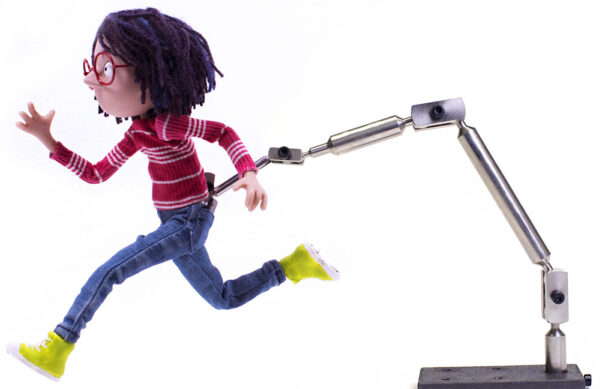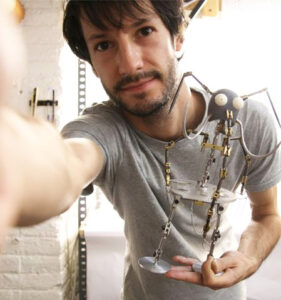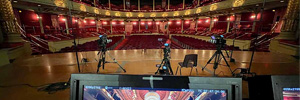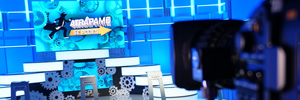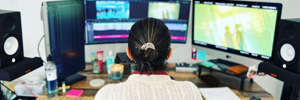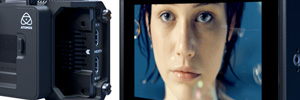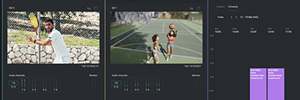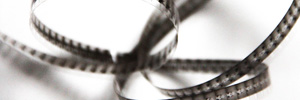Stop motion: la tecnología tras un universo inexplorado
Eduard Puertas, cofundador de la productora de animación Citoplasmas y director de Kineticarmatures (marca que produce esqueletos articulados, rigs, motion control y otras herramientas profesionales), divulga algunas de los puntos más destacados del mundo del stop motion.
La realidad es que se podría decir que mi llegada al mundo del stop motion no estuvo planificada. Originalmente, me formé en diseño de producto y estuve trabajando durante cinco años en ello: hacía sillas, perfumes y todo tipo de objetos cotidianos. No obstante, al mismo tiempo que estudiaba la carrera, empecé a desarrollar una cierta intriga para descubrir cómo funcionaba. Hice varios experimentos, me gustó mucho el resultado y acabé apuntándome a un máster.
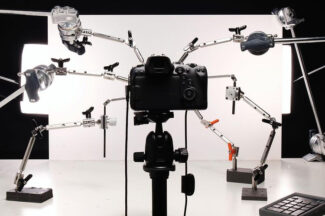 Allí conocí a la que es mi actual socia, Irene Iborra, con quien hice junto a otros compañeros un corto que funcionó muy bien. Poco a poco fuimos desarrollando más y más proyectos hasta que decidimos montar nuestra propia empresa, Citoplasmas, con la que llevamos desde 2008. Desde ese año hemos ido haciendo cortos, publicidades, series y ahora tenemos en marcha un proyecto de largometraje, Olivia and the invisible earthquake, que esperamos que salga en los próximos años. Todavía estamos en fase de financiación. Nos quedan un par de ayudas para conseguir nuestros objetivos, pero todo apunta a que conseguiremos conseguir sacar adelante el proyecto en modalidad de coproducción internacional y que será un proyecto superlargo por la naturaleza del stop motion.
Allí conocí a la que es mi actual socia, Irene Iborra, con quien hice junto a otros compañeros un corto que funcionó muy bien. Poco a poco fuimos desarrollando más y más proyectos hasta que decidimos montar nuestra propia empresa, Citoplasmas, con la que llevamos desde 2008. Desde ese año hemos ido haciendo cortos, publicidades, series y ahora tenemos en marcha un proyecto de largometraje, Olivia and the invisible earthquake, que esperamos que salga en los próximos años. Todavía estamos en fase de financiación. Nos quedan un par de ayudas para conseguir nuestros objetivos, pero todo apunta a que conseguiremos conseguir sacar adelante el proyecto en modalidad de coproducción internacional y que será un proyecto superlargo por la naturaleza del stop motion.
Actualmente, existe muy poca información disponible sobre el stop motion. O tienes la suerte de poder ir a trabajar con alguien que sabe, o el proceso de aprendizaje es una curva muy empinada. Por eso, me lancé hace unos años a lanzar un canal de YouTube para ir compartiendo el conocimiento que hemos venido acumulando. El objetivo de esta plataforma es difundir este arte que, pese a que es minoritario, nos gustaría contribuir a que se haga cada vez más fuerte. Y es que hay muchas cuestiones muy tecnológicas muy interesantes a la hora de abordar un proyecto de stop motion.
Ver esta publicación en Instagram
Los tres pilares del stop motion
Realmente, hoy en día, el stop motion no requiere de una tecnología supercara. La parte fundamental es contar con una cámara digital con salida de vídeo. Poco a poco se están introduciendo en el sector las cámaras mirrorless, pero, según mi experiencia, las réflex siguen siendo más fiables.
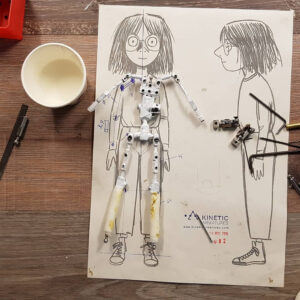 El siguiente componente indispensable en un ordenador con el software Dragonframe, and software de asistencia a la captura superfiable, muy intuitivo y con muchísimas opciones que se utiliza incluso en producciones profesionales de Hollywood. Básicamente, te permite, más allá de capturar imágenes, poder ir comprobando las que has tomado anteriormente para poder ver en tiempo real si lo que estás haciendo es correcto o no. Podrías animar a ciegas, pero con los estándares de calidad de hoy día no conseguirías lo que la gente está acostumbrada a ver en el mundo de la animación.
El siguiente componente indispensable en un ordenador con el software Dragonframe, and software de asistencia a la captura superfiable, muy intuitivo y con muchísimas opciones que se utiliza incluso en producciones profesionales de Hollywood. Básicamente, te permite, más allá de capturar imágenes, poder ir comprobando las que has tomado anteriormente para poder ver en tiempo real si lo que estás haciendo es correcto o no. Podrías animar a ciegas, pero con los estándares de calidad de hoy día no conseguirías lo que la gente está acostumbrada a ver en el mundo de la animación.
El tercer pilar del stop motion es la iluminación. No existe una selección de equipos especializados en la materia: se utiliza los estándares de cine, generalmente con LED, y luego se adaptan estas soluciones en base a las necesidades del proyecto. Por ejemplo, como los sets son más pequeños, intentamos usar luces que emitan poco calor, ya que las salas son pequeñas e incluso los personajes se podrían deteriorar.
La complejidad de las tomas
Hay que tener en cuenta que el que posiblemente sea el mayor reto del stop motion, dejando de lado el plano artístico, es la complejidad que implican las técnicas cinematográficas en conjunto con los tiempos de rodaje.
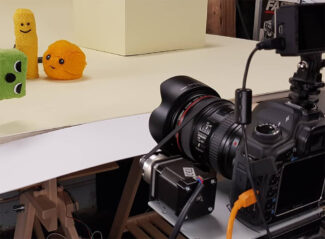 En el mundo del stop motion, cualquier movimiento de cámara, como pueda ser un cambio de foco, es mucho más complicado que en el cine, porque lo estás haciendo fotograma a fotograma; además, los incrementos son tan mínimos, que esta técnica tan sencilla puede generar importantes desafíos. Esto se une al problema de la operativa de este tipo de animación, ya que igual tardamos una semana en hacer un plano de 15 segundos. En ese tiempo, pueden pasar muchas cosas. Incluso las variaciones de temperatura del espacio pueden llegar a hacer que se muevan los elementos físicamente, lo que complica aun más si cabe ese cambio de foco. Sin embargo, pese a todo, estos movimientos de cámara son superatractivos. ¡No puedes prescindir de ellos! Sería muy interesante que, de cara al futuro, la industria pudiera crear un sistema para poder planificar movimientos de cámara en 3D y poder traspasar el proceso al software para que todo funcione.
En el mundo del stop motion, cualquier movimiento de cámara, como pueda ser un cambio de foco, es mucho más complicado que en el cine, porque lo estás haciendo fotograma a fotograma; además, los incrementos son tan mínimos, que esta técnica tan sencilla puede generar importantes desafíos. Esto se une al problema de la operativa de este tipo de animación, ya que igual tardamos una semana en hacer un plano de 15 segundos. En ese tiempo, pueden pasar muchas cosas. Incluso las variaciones de temperatura del espacio pueden llegar a hacer que se muevan los elementos físicamente, lo que complica aun más si cabe ese cambio de foco. Sin embargo, pese a todo, estos movimientos de cámara son superatractivos. ¡No puedes prescindir de ellos! Sería muy interesante que, de cara al futuro, la industria pudiera crear un sistema para poder planificar movimientos de cámara en 3D y poder traspasar el proceso al software para que todo funcione.
Por otro lado, hay que tener en cuenta el importante trabajo de artesanía que suele implicar una producción de este tipo. No hay muchas soluciones a nivel de material de sliders o de grúas que te permitan hacer movimientos de cámara a un precio razonable. O los fabricas tú, o el coste de una grúa especializada se puede disparar.
Postproducción y UHD
Finalmente, la fase de la postproducción depende en gran medida del presupuesto de la producción. A un nivel independiente, el proceso pasa por la captura con Dragonframe, una primera edición a través de After Effects, un montaje final con Adobe Premiere y, si es posible, un retoque de imagen final con DaVinci Resolve of Blackmagic Design. Desde el plano del sonido, solemos contratar a profesionales de la materia para que trabajen todo este ámbito: desde el doblaje, hasta la música, pasando por todos los efectos de sonido necesarios para dar vida a las piezas.
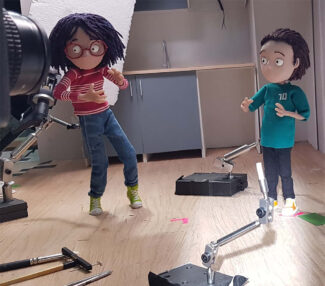 La buena noticia dentro de todo este proceso de postproducción es que no nos vemos limitados a la hora de trabajar en altas resoluciones o en estándares demandados por la industria. Actualmente, capturamos con nuestras réflex en 6K: una resolución mucho mayor de lo que exige la industria, que suele estar entre el HD y el 4K.
La buena noticia dentro de todo este proceso de postproducción es que no nos vemos limitados a la hora de trabajar en altas resoluciones o en estándares demandados por la industria. Actualmente, capturamos con nuestras réflex en 6K: una resolución mucho mayor de lo que exige la industria, que suele estar entre el HD y el 4K.
Esto, como tantas otras lecciones del mundo del stop motion en todos los planos, nos lo ha enseñado la experiencia. El primer corto que creamos lo grabamos en MiniDV PAL… ¡algo que ya está superado a día de hoy! Siempre, como en todo lo relacionado con el mundo de la producción audiovisual, es necesario ir un poco más allá de lo necesario para que perdure más en el tiempo.
Eduard Puertas
Cofundador de la productora de animación Citoplasmas y director de Kineticarmatures.
Did you like this article?
Subscribe to our NEWSLETTER and you won't miss a thing.



